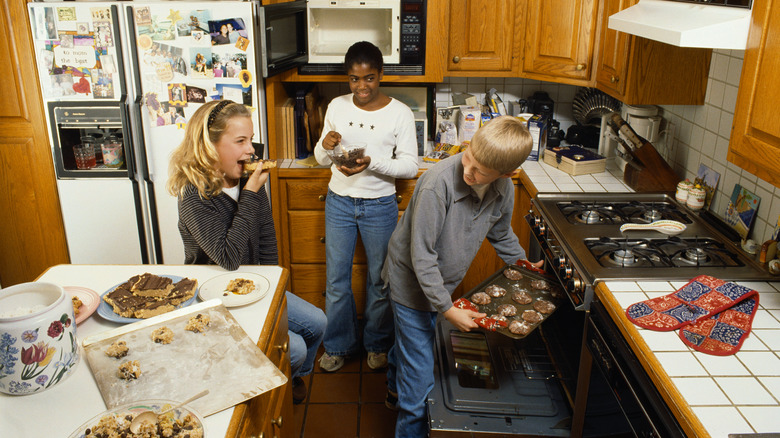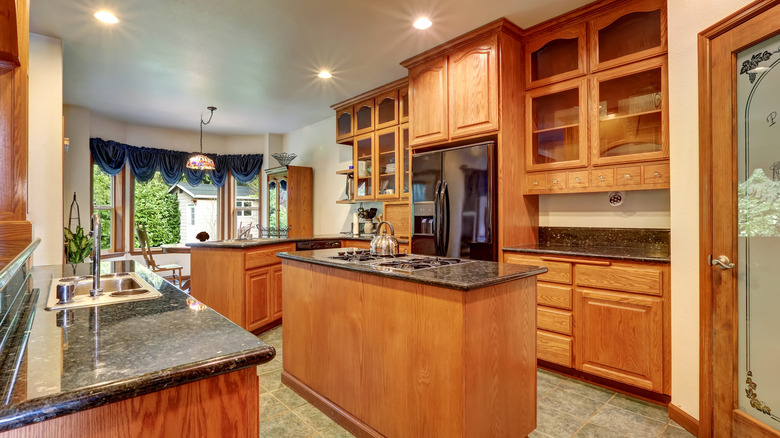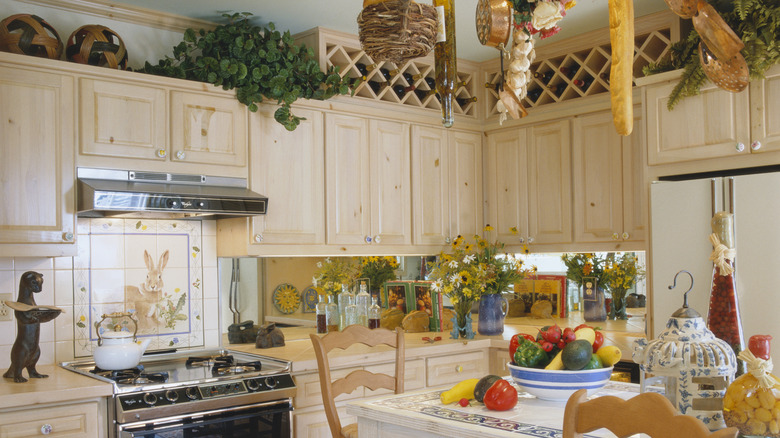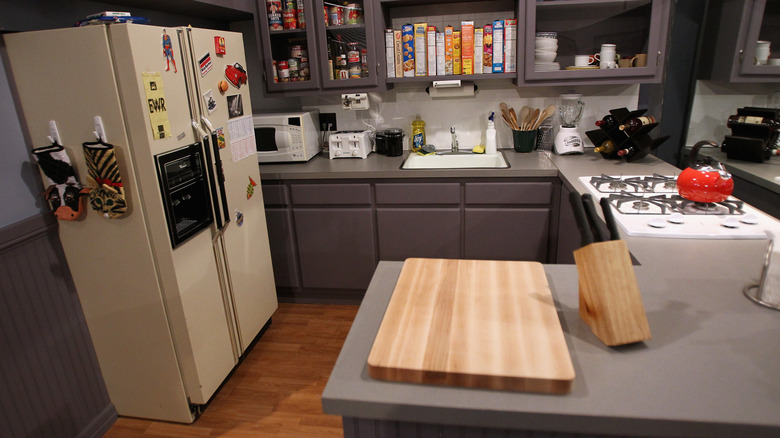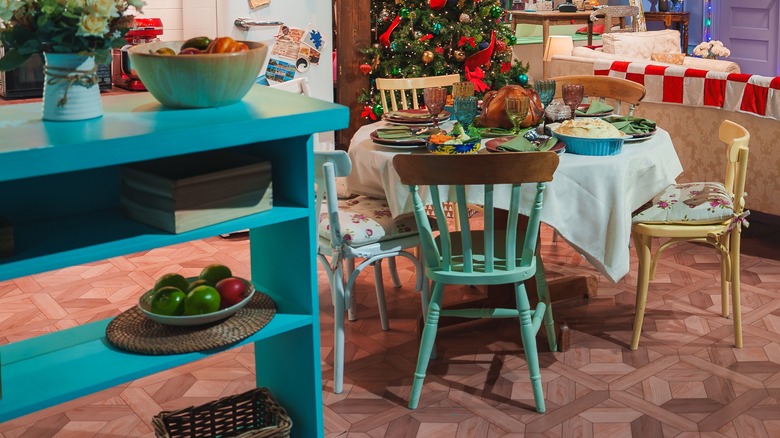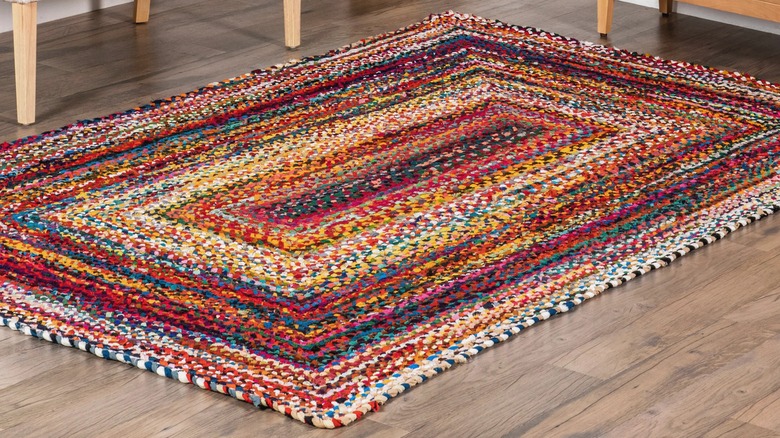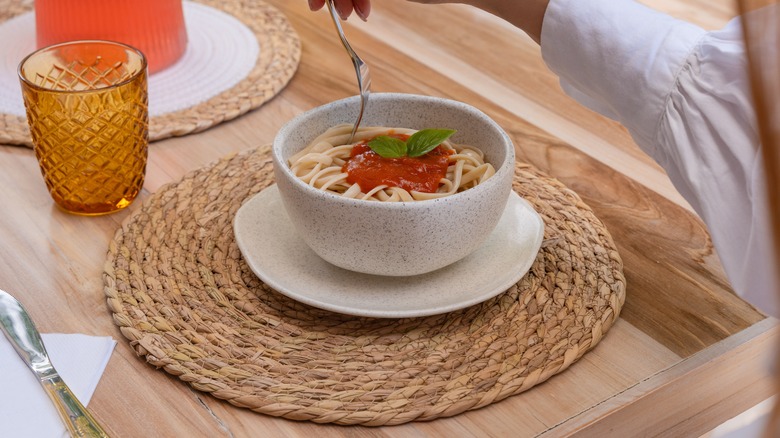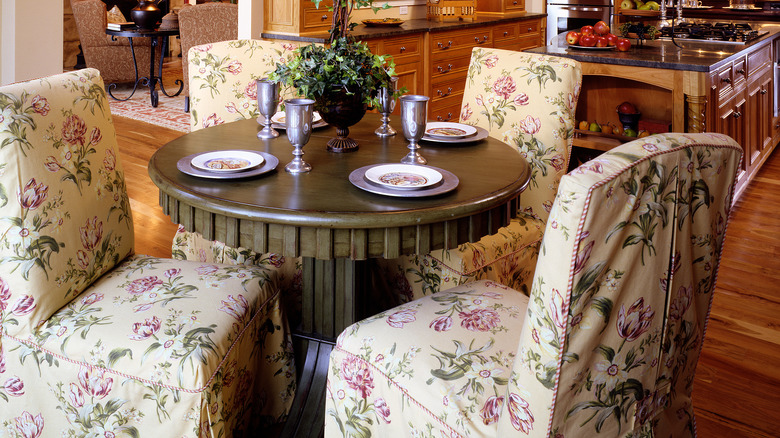You Know You're From The '90s If You Had These Things In Your Kitchen
If you think back to your '90s kitchen, or even just the kitchen on your favorite '90s TV show, you'll notice some commonalities. It's not just that these spaces lacked today's smart kitchen gadgets or high-tech AI ovens (those didn't exist yet), but there were also design and aesthetic trends that reigned.
The 1990s home decor style was a mix of quirk and coziness. You likely remember walking into a friend's (or your mom's') kitchen with its oak cabinetry, patterned wallpaper, and warm brown hues. Color was bold and deep, often mismatched with abandon. These kitchens weren't about minimalism or sleek modernism — they were built to feel lived-in, full of personality, and often a little chaotic in the best way. Sure, many of these trends may seem kitschy, but there was a method to the madness. If you've ever stared at a multicolored braided rug and felt a wave of déjà vu, or caught yourself eyeing a glass-paneled cabinet and thinking of home, this one's for you.
Glass-front wood cabinets were used for display
Almost no '90s kitchen was complete without glass-front cabinets — especially those made from dark, heavy oak. These cabinets were ideal for storage, but also for staging your best dishware. The open panels added a bit of brightness to what were otherwise dark-colored kitchens. Likely with cut beveled edges, these wood cabinets offered a warm, approachable vibe.
Cabinets tended not to reach the ceiling
One absolute classic of '90s design was cabinets that just ... stopped short. That open gap between the top of the cabinets and the ceiling was often decorated with plants, baskets, or brightly-colored ceramic plates. It was a design quirk of the time, and although today's kitchens lean toward seamless, ceiling-height cabinetry, you can spot a '90s kitchen by those floating cabinets.
White appliances were all the rage
If you grew up opening a white plastic-paneled fridge, making toast in a white toaster, reheating food in a white microwave, or watching sitcoms like "Seinfeld," then you know the ubiquity of white plastic appliances. They were practical, clean-looking (at least at first), and totally everywhere. Stainless steel may have reigned for years afterward, but white electrical gadgets are quintessentially '90s.
Wooden dining chairs were often painted bright hues
Often found surrounding a laminate-topped table, wooden dining chairs were a staple in '90s homes. Think of Monica's kitchen in "Friends," with her menagerie of chairs in various shapes and colors. The design of the decade wasn't afraid of painting them either, and maybe the look was even better when mismatched.
Colorfully braided kitchen rugs were ubiquitous
Braided rugs, especially in multicolored patterns, offered coziness and rustic charm. Whether under the sink or in the center of the kitchen, they were as decorative as they were practical, and often featured bright blues and reds. The '90s were not the time of the millennial spic-and-pan, all-white kitchen; it was a decade of vibrant, saturated hues and textures.
Every kitchen needed something wicker or rattan
Whether it was a fruit basket, a placemat, a napkin holder, or even a chair, wicker and rattan pieces brought texture into the kitchen, and they were everywhere. These natural materials were hugely popular in the '90s and are now finding their way back into modern kitchens for their boho appeal.
Patterns were everywhere and on everything
Florals, gingham, and stripes weren't just for tea towels — they took over entire kitchens. From window valances to wall tiles, the '90s loved a good print. A chintz floral pattern on your curtains and matching upholstered chairs was peak '90s charm. Stripes were also in, from oven mitts to wallpaper. And whatever kitchen towels you had, they surely were not simple or color-blocked.

